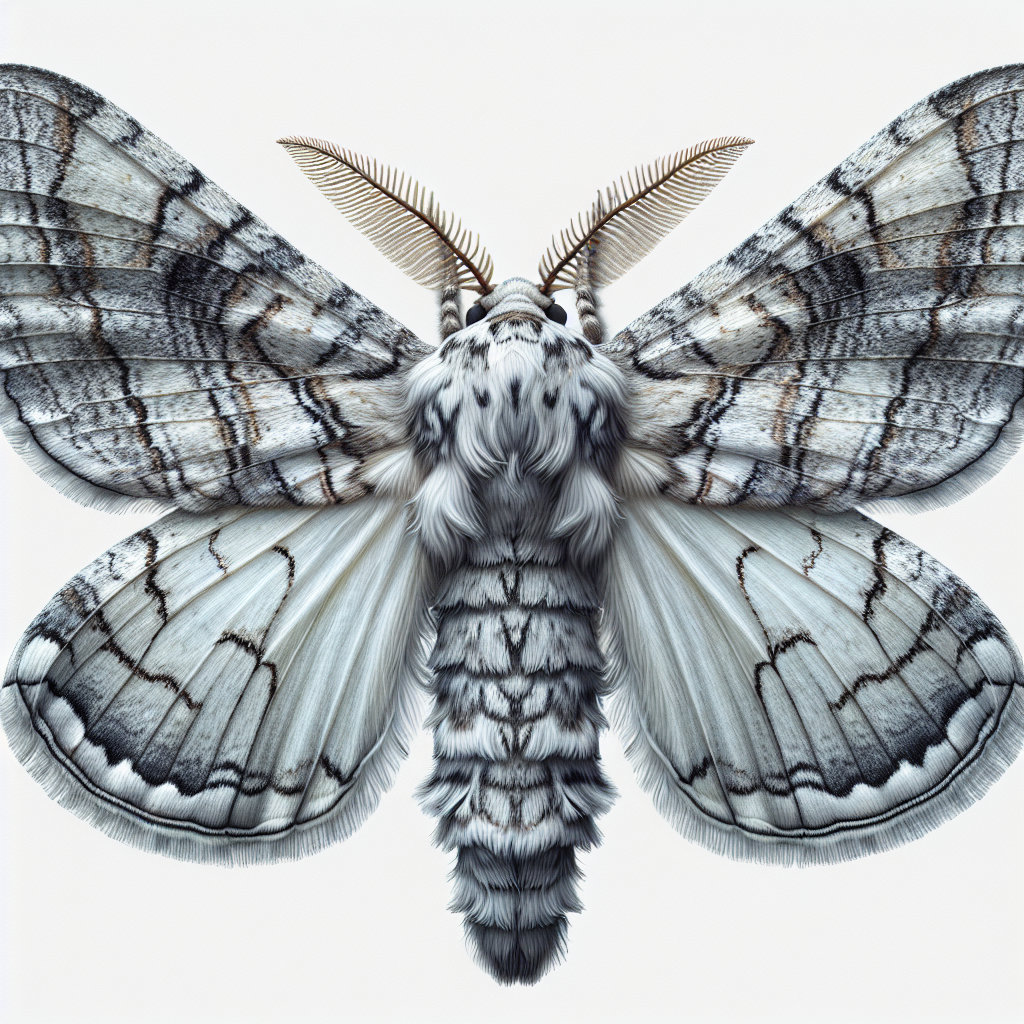The Douglas-fir tussock moth ( Orgyia pseudotsugata) is a significant defoliating pest of coniferous forests in western North America, earning its pest status through its voracious feeding habits and capacity for population outbreaks.
Damage Caused to Plants:
The primary damage caused by the Douglas-fir tussock moth is defoliation. Larvae (caterpillars) consume the needles of various conifer species, causing significant reductions in tree growth and vigor. Severe defoliation can lead to tree mortality, particularly in young trees or those already stressed by other factors like drought or disease. Repeated defoliation weakens trees, making them more susceptible to secondary pests, diseases, and windthrow. The economic impact is substantial, affecting timber production and the overall health of forest ecosystems. Aesthetically, heavy infestations can drastically alter the appearance of forests.
Life Cycle and Impact at Each Stage:
-
Egg Stage: Eggs are laid in masses, typically on the needles or underside of branches, covered by the female moth’s fluffy abdominal hairs. This stage doesn’t directly cause plant damage but the location of the egg mass foreshadows larval feeding sites.
-
Larval Stage: This is the damaging stage. Young larvae initially feed on tender new growth, gradually moving to older needles as they develop. They have characteristic long hairs, some of which can cause skin irritation in humans. Their feeding activity results in noticeable needle loss and potential branch dieback. Multiple larval instars (stages between molts) progressively increase feeding intensity.
-
Pupal Stage: The pupae are usually found within loosely spun silken cocoons on branches or under bark, causing no direct damage to the plant at this stage.
- Adult Stage: Adult moths are relatively short lived and less impactful on plants. The females are flightless, while the males are capable of flight and are involved in mating. The female’s primary contribution to damage is laying more eggs, initiating the cycle anew.
Specific Plant Species Affected:
The Douglas-fir tussock moth primarily feeds on Douglas-fir (Pseudotsuga menziesii), but it also attacks other conifers, including grand fir, ponderosa pine, western larch, and Engelmann spruce. The extent of damage can vary depending on the tree species and its susceptibility. Younger trees are typically more vulnerable to severe damage and mortality than mature trees.
Variations in Impact:
The impact of Douglas-fir tussock moth outbreaks varies geographically and depending on environmental factors. Outbreaks are influenced by weather patterns, with warm, dry conditions during the larval stage often leading to higher survival rates and more significant damage. The density of host trees also plays a crucial role, influencing larval aggregation and overall defoliation levels.
Feeding Habits and Reproduction Rates:
Larvae are voracious feeders, consuming large quantities of needles during their development. High reproductive rates contribute to the potential for rapid population growth and dramatic outbreaks. The number of eggs laid by a single female varies but can be substantial, resulting in a significant increase in the larval population the following year.
Economic and Ecological Damage:
Outbreaks can cause substantial economic losses to the timber industry due to reduced tree growth, mortality of young trees, and increased vulnerability to other pests and diseases. The ecological impacts include habitat alterations in forests, effects on wildlife that depend on the affected trees, and potential shifts in forest species composition. The actual costs are difficult to precisely quantify and vary depending on the affected area and intensity of the infestation.
Control Measures:
Insecticide Controls: (Note: Always follow label instructions carefully and prioritize safety precautions. Resistance management strategies are crucial to the long-term efficacy of insecticides.) Specific product recommendations must be based on current registration and local guidelines and should be obtained from your local agricultural extension service. The use of broad-spectrum insecticides is generally discouraged due to non-target effects on beneficial insects and the wider environment.
Organic/Integrated Pest Management (IPM):
-
Biological Control: Several natural enemies, including parasitic wasps, flies, and predatory beetles, help control tussock moth populations. Conservation biological control involves protecting and enhancing these natural enemies.
-
Monitoring and Early Detection: Regular monitoring of forests and individual trees for egg masses, larval presence, and defoliation signs is critical for early detection of outbreaks. This informs effective and timely interventions.
- Pheromone Traps: Monitoring adult male moths using pheromone traps can help in assessing population levels and timing interventions.
Preventative Measures:
-
Maintaining tree health: Healthy trees are less susceptible to severe damage; proper forestry practices are crucial.
- Silvicultural Practices: Strategic thinning can reduce host density and create less suitable conditions for outbreaks.
Early Signs of Infestation:
- Presence of egg masses on branches.
- Noticeable defoliation, especially on younger trees.
- Larval activity, particularly in early spring and summer.
Recommendations for Suspected Infestations:
-
Contact your local forestry agency or agricultural extension service for appropriate advice and identification confirmation.
-
Implement monitoring strategies to assess the extent of the infestation.
- Consider appropriate control measures based on the severity of the infestation and local guidelines. IPM approaches should be prioritized.
Insecticide Resistance Management:
- Rotate insecticide classes to prevent the development of resistance.
- Use insecticides only when necessary and at the recommended rates.
- Integrate insecticides with other control strategies to reduce reliance on insecticides.
This information provides a comprehensive overview. Always consult with relevant experts for specific recommendations tailored to your situation. Local regulations and guidelines must be followed regarding pesticide use and other control measures.
